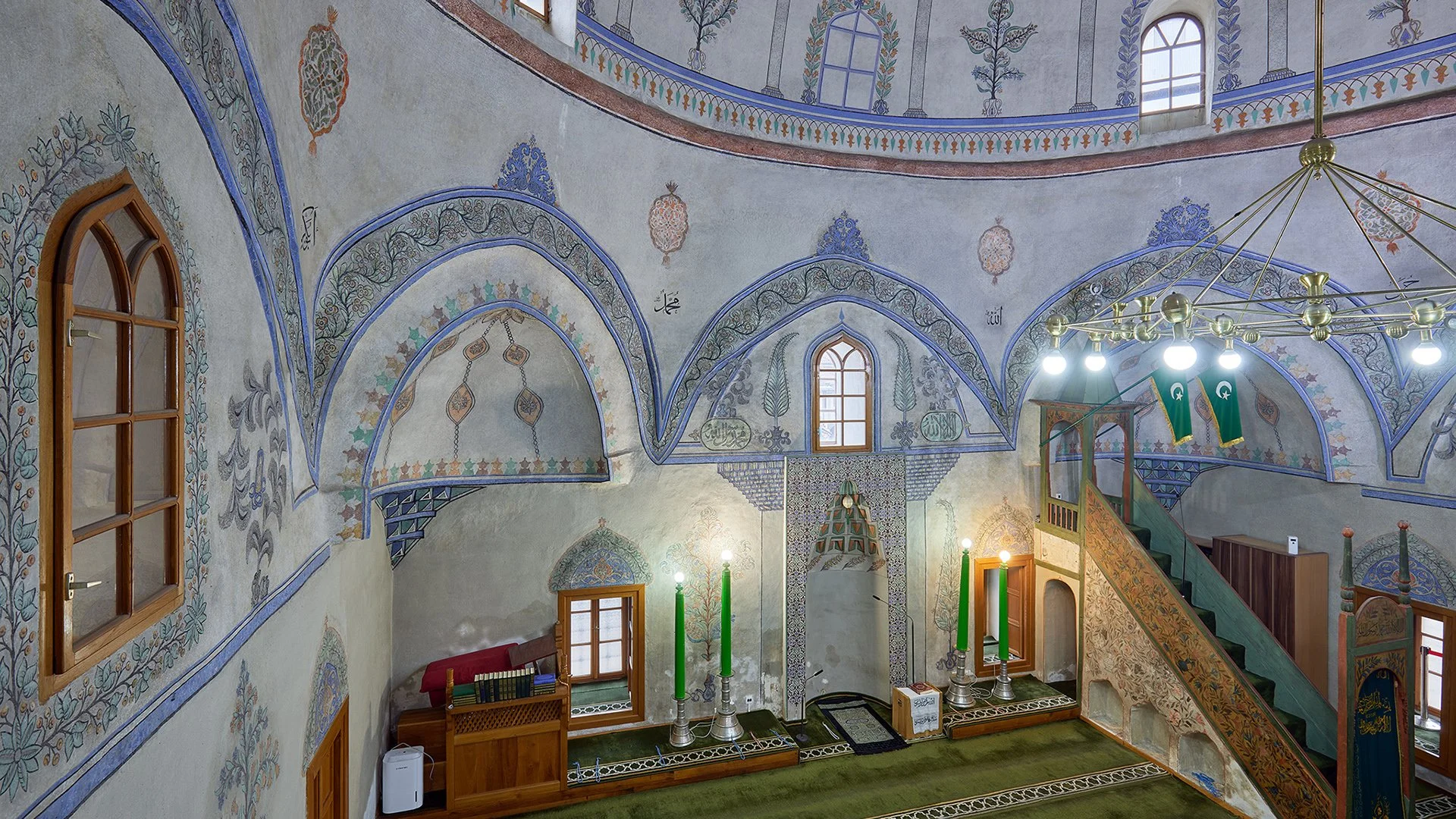
ČEKREKČIJINA MOSQUE IN SARAJEVO
Author: Amra Madžarević, Museum of the City of Sarajevo • Photo & video: Mirza Hasanefendić
On the edge of Baščaršija, and at the foot of the Kovači Street there is the Čekrečijina Mosque. It was commissioned by Muslihudin hadži Mustafa Čekrekčija in 1526. His waqfnama (deed of endowment) on the construction of the mosque has been preserved in the original, and it is one of the additional values of the mosque. At the same time, it is one of the oldest preserved written documents in Sarajevo. The waqfnama is dated as of Dhu al-Qadah 932 AH, i.e. August 1526 AD (9 July-6 September 1526).
The mosque has features that distinguish it from others. First of all, it is the oldest preserved domed mosque in Sarajevo; it does not have a cemetery of its own because it is girded with shops; its dome is shallower than others; on the dome, there is a winch instead of the usual alem. The winch reminds of its initiator hadži Mustafa, who was a winch-maker (Bosnian word for winch is čekrk). This mosque is one of the few which did not burn down during the raid by Eugene of Savoy.
The appearance and the position of the minaret are also distinctive, since its body traverses the dome. It is likely that the very space for building was narrow and demanding.
Conservation-restoration research in the interior of the mosque discovered five layers of paintings. Naturally, they were made by different masters and are of different quality and artistry. Today, the best visible ones are those from the 19th century, with floral motifs and arabesques.
The Čekrekčijina Mosque is a national cultural monument.










































